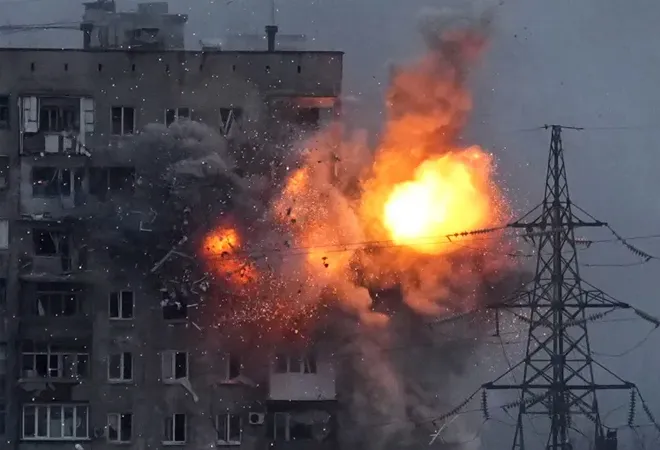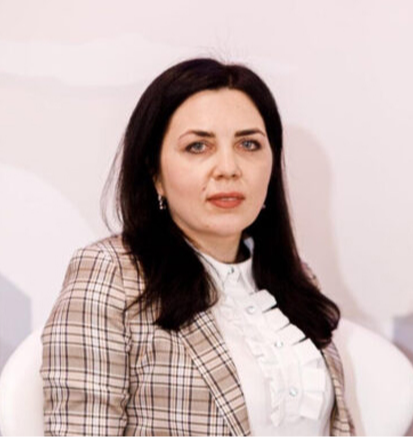-
CENTRES
Progammes & Centres
Location
Kyiv's Western allies express their readiness to support Ukraine “as long as it takes”, but this does not answer the main question: How much support will be needed?

Last month, the Ukraine conflict marked its first anniversary. Today, there does not appear to be a clear end to the hostilities. Opinions of experts on this matter differ: While the head of Ukraine's intelligence, Kyrylo Budanov, foresees the probability of the end of the war this year, Western officials are of the opinion that it could take several years.
The military front
The Ukrainian resistance has become a phenomenon that neither its Western partners (who were convinced that it would fall in 72 hours) nor Vladimir Putin (who planned to capture Kyiv in two or three days, and all of Ukraine in a few weeks) foresaw.
Strong international support, the introduction of sanctions against Russia, and the provision of military aid were the result of Ukraine’s efforts on two fronts—military and diplomatic.
Since the very beginning, Ukrainian armed forces were able to fend off the Russian army, which ranks second amongst the most powerful armies in the world. The successes of the Ukrainian military have been reflected in the number of strategic victories that changed the course of the war: The destruction of the flagship of the Black Sea Fleet, the cruiser “Moskva”, by Ukrainian missiles; the liberation of Zmiiny Island; the blowing up of the Crimean bridge; the liberation of Sumy, Kyiv, Chernihiv Oblasts, and later Kharkiv Oblast and the city of Kherson; strikes on military facilities in Crimea and the Russian strategic airfield “Engels”; and successful defence and deterrence of the Russian offensive in the East of Ukraine.
These strategic victories convinced many sceptical Western officials of Ukraine's ability to defend its state. Strong international support, the introduction of sanctions against Russia, and the provision of military aid were the result of Ukraine’s efforts on two fronts—military and diplomatic.
The US-initiated meeting on 21 April 2022 of the defence ministers of various countries at the US air base in Germany was a turning point in the provision of military aid to Ukraine. The main task of the Ramstein format is to coordinate efforts for military-technical assistance, both in the current stage of hostilities and in the longer run. During the year, there were eight meetings in the Rammstein format, which united more than 50 countries of the world.
This was a very important step on the part of the West in supporting Ukraine, given the caution and balance with which Western partners approached the provision of weapons. In fact, during this year, they went from preparing Ukrainians for a guerrilla war—an option which was considered due to the belief that the Russians would quickly seize Ukrainian territory—to full-fledged training of the Ukrainian military at NATO bases and the provision of high-tech samples of Western weapons.
The main task of the Ramstein format is to coordinate efforts for military-technical assistance, both in the current stage of hostilities and in the longer run.
Unfortunately, given the fact that the Western partners were bound by their own fears—unwillingness to further escalate the war and to be drawn into a confrontation with Russia—their belated decisions cost Ukrainians’ lives and the destruction of residential buildings and infrastructure. For example, over the course of a year, the Russian army carried out 5,000 missile and 3,500 air strikes on the territory of Ukraine, as well as 1,000 UAV launches. The request to “close the sky” over Ukraine has been heard since the spring, but the decision to provide leading air defence systems, such as the Patriot air defense system, was made only after the Russian Federation purposely destroyed 50 percent of Ukraine's energy system.
Currently, the Ukrainian army is waiting for hundreds of units of tanks and armoured vehicles, including Leopard, Abrams, Bradley, and Marder, which Western partners finally agreed to provide after many months of hesitation and consultations. Western combat aircraft and long-range missiles remain the last point on which the Western powers need to follow through.
Ukrainian diplomacy has become an important component of ensuring international support for Ukraine at the multilateral and bilateral levels. The conflict forced Ukrainian diplomats to switch to the martial law format: Not only to change the style of clothing to “military” but also to focus on the main foreign policy goal of strengthening security.
Ukraine’s Minister of Foreign Affairs, Dmytro Kuleba, identified three main areas of activity for the Ukrainian diplomats: Strengthening partnerships with allies; ensuring their pressure on the Russian Federation, in particular sanctions; and implementing agreements on the supply of weapons to the Ukrainian army. In autumn, energy was added to these priorities. Ukrainian diplomats faced a new task—finding equipment for the destroyed power system. As Minister Kuleba said, “Now both the ambassadors of Ukraine and me are quickly mastering everything about generators with a capacity from 6.3 to 98 kW, as well as from 50 to 500 kW. I also got the gist of the automatic switch and know a lot I didn't plan to know about transformers and the nuances of transporting them. Together with the Ministry of Energy, Ukrenergo and the entire energy industry of Ukraine, we are already bringing everything necessary for the restoration of energy systems from the world—from all countries and in the shortest possible time. I assure you that the diplomats will do everything in their power to ensure that there are weapons at the front, and light, heat and water in the homes of Ukrainians.”
It is about the fact that Crimea, regions of Donbas, and occupied parts of Kherson and Zaporizhzhia regions cannot be bargaining chips for making peace with the Russian Federation.
Along with this, Ukrainian diplomacy managed to mobilise international support for Ukraine at the United Nations (UN) and other international and regional platforms.
On the eve of the anniversary of the Ukrainian Crisis, the UN General Assembly adopted the resolution “On a just and lasting peace in Ukraine” by 141 votes, which enshrines the key provisions of President Zelenskyi's Peace Formula. This is important from the point of view of laying the foundations for peace in Ukraine on the basis of maintaining territorial integrity within its internationally recognised borders, as defined in 1991. It is about the fact that Crimea, regions of Donbas, and occupied parts of Kherson and Zaporizhzhia regions cannot be bargaining chips for making peace with the Russian Federation.
In addition, Ukraine has made progress in advancing its European and Euro-Atlantic course: In 2022, it received candidate status for membership in the European Union (EU) under a simplified procedure and applied to join the North Atlantic Treaty Organisation (NATO), and is also working on concluding post-war security guarantees from the leading countries of the world for the post-war period.
The conflict became a great challenge not only for the Ukrainian authorities but also for the Ukrainian society, leading to a social transformation of Ukrainians. Gradus Research analysts have identified eight key social trends that are currently observed among Ukrainians: Trust in each other and the state; crystallisation of identity (primarily, rejection of the Russian language and Russian cultural heritage that remained after the Soviet Union); moral and psychological stability; a migration shift (about 5-6 million Ukrainians left Ukraine because of the war, but 70 percent express a desire to return); belief in victory (87 percent are sure that Ukraine can liberate its territories); restoration of employment and financial support for the army (64 percent of Ukrainians regularly donate money for military and humanitarian aid); rationalisation of consumption; and growth of media dependence.
At the same time, despite the lack of stability and great security risks caused by the war, 95 percent of Ukrainians are in favour of continuing military resistance, and 89 percent are ready to oppose Moscow even if it uses tactical nuclear weapons, according to the results of the Munich Security Index 2023.
Ukrainian society has set high demands regarding what a stable and just peace should be. The lack of trust in Russia calls into question any form of negotiations until the Russian troops fully withdraw from Ukrainian territory, and Ukraine is provided with the appropriate forces and means for its own defence and to deter repeated attacks by the Russian Federation in the future.
The Munich Security Conference, which took place on 19 February 2023, was an important milestone in summarising the impact of the first year of the Russian-Ukrainian conflict. The dominant formula of the conference was the thesis: “Ukraine must win; Russia must be defeated.” For their part, Kyiv's Western allies expressed their readiness to support Ukraine “as long as it takes”. However, this does not answer the main question: How much support will be needed?
The views expressed above belong to the author(s). ORF research and analyses now available on Telegram! Click here to access our curated content — blogs, longforms and interviews.

Nataliya Butyrska is a freelance expert on International Relations from Kyiv, Ukraine. ...
Read More +